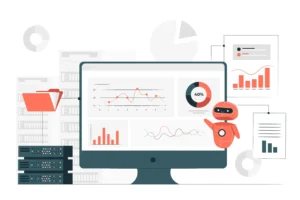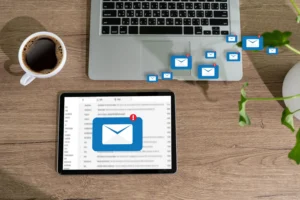The 8 Best Email Apps for iPhone in 2025

Email remains an essential part of our lives in 2025, whether we’re catching up with colleagues, finalizing projects on the go, or simply managing personal communication. With the sheer volume of emails many of us receive daily, finding the right email app can make all the difference between overwhelm and organization. For iPhone users especially, having a powerful yet user-friendly email app can boost productivity, ensure privacy, and help you stay in control of your inbox.
To help you choose, we’ve narrowed down the 8 best email apps for iPhone in 2025. From feature-packed apps for professionals to minimalist designs for casual users, there’s something here for everyone.
1. Spark Mail

Best for: Teams and collaborative work.
Spark Mail continues to reign as a favorite among professionals who thrive on collaboration. It’s not just an email app; it’s a productivity tool that allows team inboxes, shared drafts, and smart prioritization.
Key Features:
- Smart inbox that organizes emails based on importance.
- Shared drafts and collaborative editing for teams.
- Integration with productivity tools like Trello and Asana.
Pros:
- Excellent team collaboration.
- Customizable notifications.
- Free version offers generous features.
Cons:
- Might feel overwhelming for solo users.
Why It Stands Out
Spark’s team-oriented tools make it a gem for small businesses and groups who want to work seamlessly without switching between apps.
2. Apple Mail
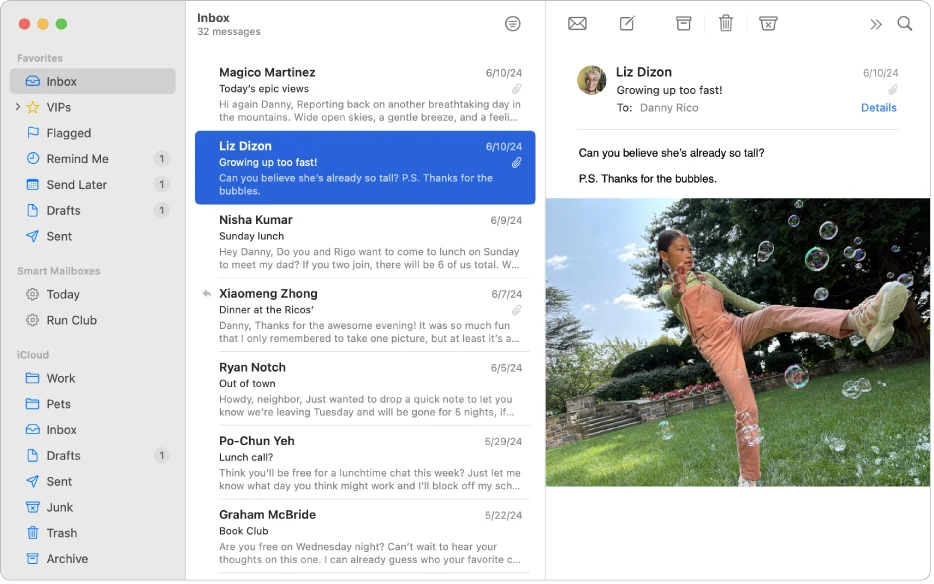
Best for: iPhone users who prefer simplicity and built-in functionality.
Apple Mail is Apple’s default email app, and it has consistently improved year by year. Built for iOS, it’s tightly integrated with other Apple apps, offering a smooth, minimalist experience.
Key Features:
- Smart Mailboxes for organized inboxes.
- iCloud+ features like Hide My Email for privacy.
- Seamless integration with Siri for hands-free email management.
Pros:
- Free and preloaded on all iPhones.
- Secure with Apple’s privacy measures.
- Familiar and easy to use.
Cons:
- Limited advanced features compared to competitors.
Why It Stands Out
Apple Mail is perfect for casual users who want a functional and worry-free email experience without downloading third-party apps.
3. Microsoft Outlook

Best for: Business professionals juggling email and calendars.
Microsoft Outlook has become a powerhouse productivity tool, seamlessly combining email, calendars, tasks, and contacts in one app.
Key Features:
- Integrated calendar and scheduling tools.
- Focused Inbox to prioritize important messages.
- Microsoft 365 and Teams integration.
Pros:
- Robust and reliable for business users.
- Supports multiple email providers.
- Excellent spam filter.
Cons:
- Some advanced features require a Microsoft 365 subscription.
Why It Stands Out
Its all-in-one approach makes Outlook ideal for people who rely on their email and calendar to run their day.
4. Gmail
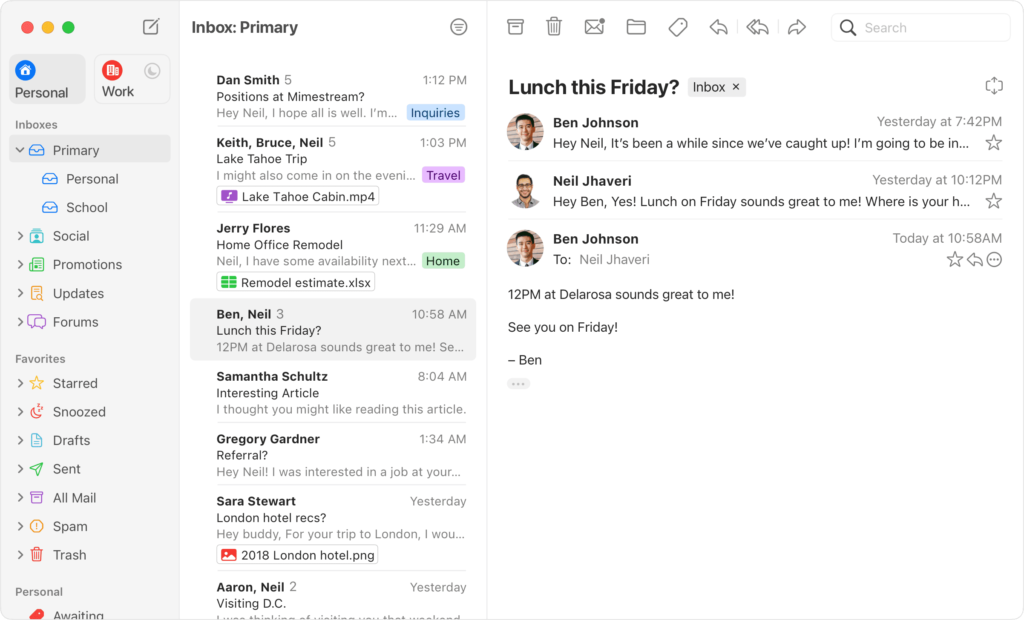
Best for: Google ecosystem users.
Gmail remains one of the most popular email apps, thanks to its clean design, powerful spam filtering, and integration with the Google workspace.
Key Features:
- Seamless integration with Google Drive and Google Docs.
- Advanced search filters.
- AI-powered email suggestions and categorization.
Pros:
- Free and packed with features.
- Cross-platform compatibility.
- Minimal learning curve.
Cons:
- Limited privacy due to Google’s ad-based ecosystem.
Why It Stands Out
For anyone invested in Google’s services, Gmail is the obvious choice for its smooth connectivity and user-friendly interface.
5. Edison Mail

Best for: Casual users who want simplicity and speed.
Edison Mail prides itself on speed and a clutter-free experience. It’s perfect for users who want essential features without being bogged down by complexity.
Key Features:
- One-tap unsubscribe functionality.
- Built-in assistant to track packages, bills, and travel plans.
- Unified inbox for multiple accounts.
Pros:
- Clean and minimalist design.
- Free to use.
- Prioritizes user convenience.
Cons:
- Lacks advanced customization options.
Why It Stands Out
Edison focuses on making email fast and simple, and for many, it’s exactly what they need to conquer inbox anxiety.
6. ProtonMail
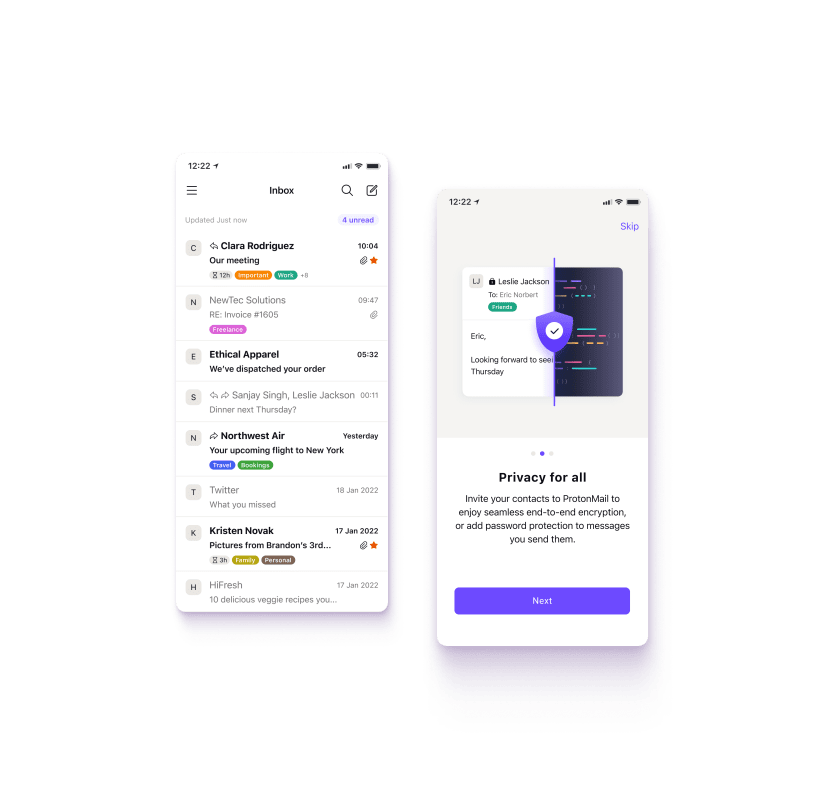
Best for: Privacy-focused users.
If email security is your top priority, ProtonMail is the gold standard. Built with end-to-end encryption, it ensures your emails are private and secure.
Key Features:
- End-to-end encryption for all messages.
- Anonymous signup and zero access to user data.
- Self-destructing messages for added confidentiality.
Pros:
- Exceptional privacy and security.
- Open-source and no tracking.
- Offers a free plan.
Cons:
- Limited storage on free tier.
- Interface is functional but not flashy.
Why It Stands Out
For journalists, activists, or anyone who prioritizes digital privacy, ProtonMail is non-negotiable.
7. BlueMail
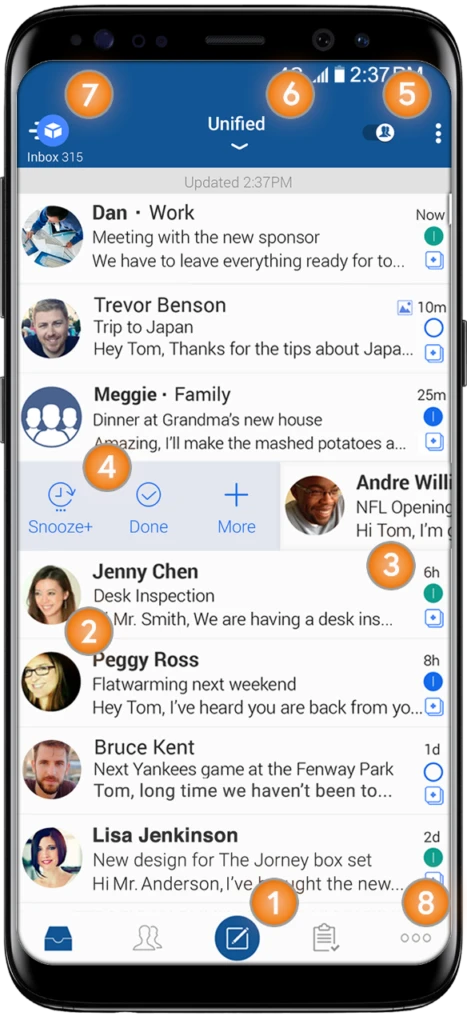
Best for: Users managing multiple accounts.
BlueMail specializes in handling multiple email accounts seamlessly, making it a favorite for freelancers and consultants.
Key Features:
- Unified inbox for multiple accounts.
- Customizable themes and notification settings.
- Calendar and task integration.
Pros:
- Great for users with several email accounts.
- Intuitive design with plenty of customization.
- Free to use.
Cons:
- Lacks advanced team collaboration tools.
Why It Stands Out
BlueMail’s ability to juggle accounts without skipping a beat makes it indispensable for users with busy inboxes across various platforms.
8. Hey
Best for: Cutting-edge email experiences.
Hey rethinks email entirely, with a mission to clean up clutter and put users back in control of their inboxes. It may not be for everyone, but it’s certainly refreshing.
Key Features:
- “The Screener” for approving senders.
- Imbox (yes, with an “m”) to focus on important emails.
- Smart privacy protections like hidden trackers detection.
Pros:
- Unique take on email that reduces unnecessary messages.
- Deliberately simple and clutter-free.
- Built-in privacy protection.
Cons:
- Paid subscription model.
- No POP or IMAP support.
Why It Stands Out
Hey isn’t just an app; it’s a new way of thinking about email. For people tired of traditional inboxes, it’s a revelation.
How to Choose the Right Email App
With so many excellent options, picking the right email app can feel overwhelming. Here are some tips to make the decision easier:
- Think About Your Workflow: If you work in teams, apps like Spark or Outlook may be the way to go. For simplicity, Apple Mail or Edison Mail might suit you better.
- Assess Your Privacy Needs: If privacy is a top concern, go for ProtonMail or Hey.
- Consider Ecosystem Alignment: Gmail works great if you’re in the Google ecosystem, while Apple Mail pairs perfectly with other iOS apps.
- Test the Free Versions: Most apps offer free features, so experiment to see which one aligns with your needs.
Choosing the right email app is about making your digital life easier. Whether you’re a productivity powerhouse or just want to keep things simple, there’s an app on this list for you. Happy emailing!

